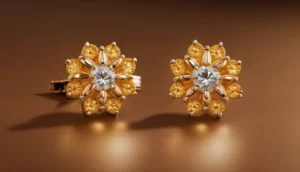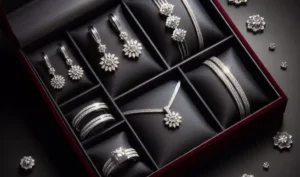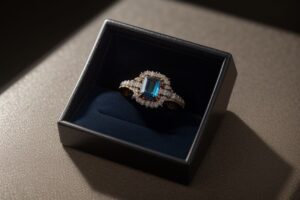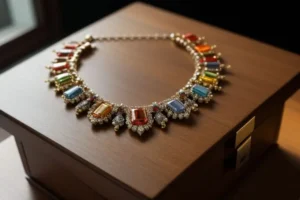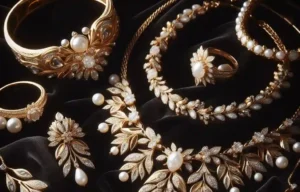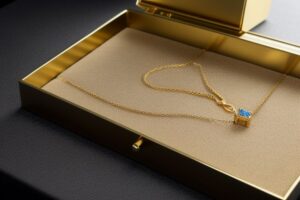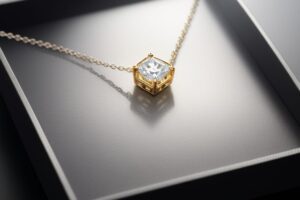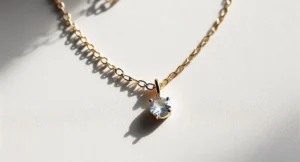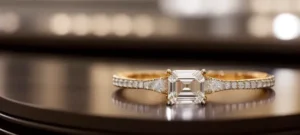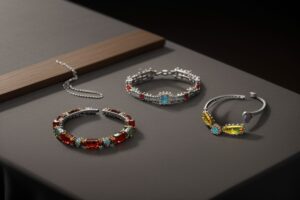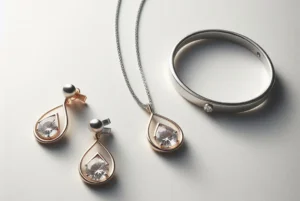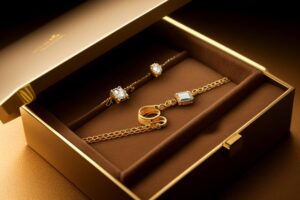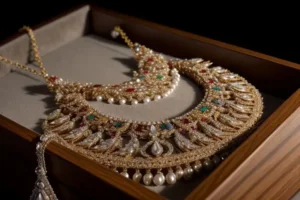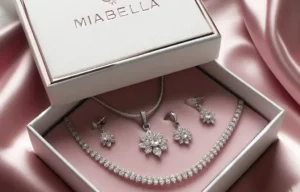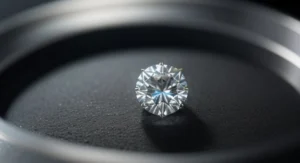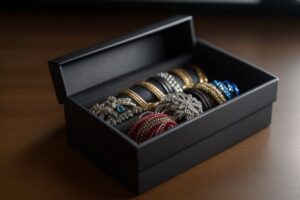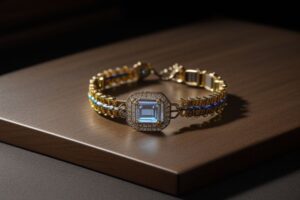14kp Marking on Gold Jewelry: If you’ve ever encountered a gold piece of jewelry with the marking ’14kp’, you might have been left scratching your head.
What exactly does this symbol mean, and how does it affect the value and quality of the gold?
In this blog post, we’ll deeply understand what this marking means, its significance, and how to distinguish between real and counterfeit gold jewelry.
14kp Gold Jewelry – Top 10 Options
What Does 14kp Mean on Gold Jewelry?
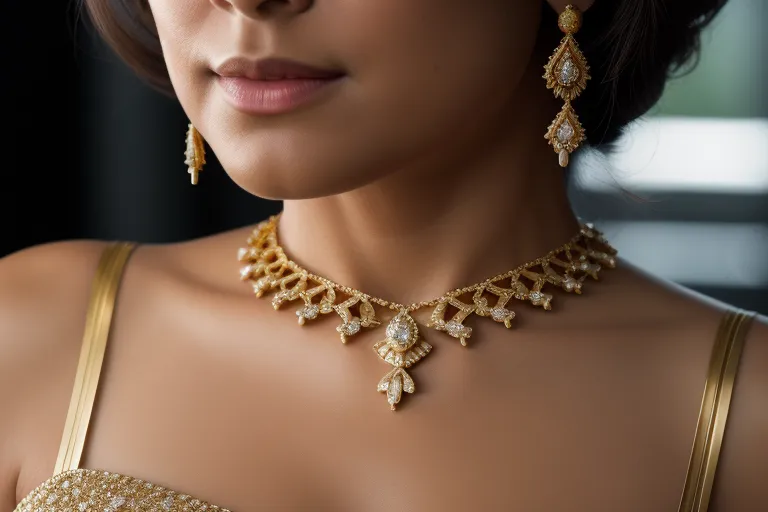
The ’14kp’ mark on gold jewelry signifies the exact gold content within a piece. The ’14k’ part of the mark signifies that the jewelry comprises 14 parts gold out of 24 parts. This equates to approximately 58.3% gold content.
The ‘p’ stands for ‘plumb’, a term borrowed from old-world measuring techniques that symbolizes precision and accuracy.
This means that when a piece of jewelry is marked with ’14kp’, it guarantees that exactly 58.3% of the piece is gold, not an approximate figure.
This marking assures buyers, enabling them to know the precise gold content in their jewelry, which can greatly influence the piece’s value.
Understanding Gold Purity Marks
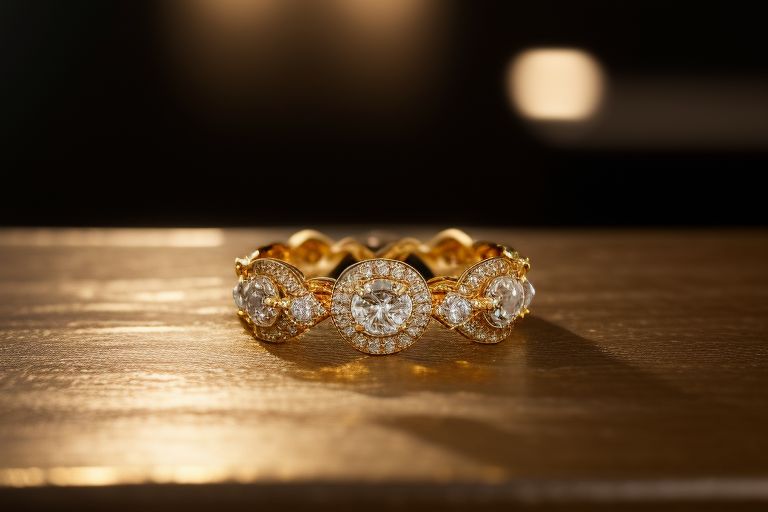
Gold purity marks are a method jewellery professionals employ to convey the quantity of pure gold within a piece. ‘karats’ are pivotal to this system, with pure gold represented as 24 karats – a symbol of its 100% gold constitution.
Therefore, when you see a 14-karat mark, you can deduce that slightly more than half of the composition is gold, with the remaining elements being other metals.
These additional metals, such as silver or copper, are integrated to enhance the piece’s durability, given that pure gold can be quite malleable and susceptible to damage.
The incorporation of these metals, however, does not diminish the value or the attractiveness of the jewelry; rather, they enhance the strength and longevity of the piece.
The Meaning of Plumb Gold
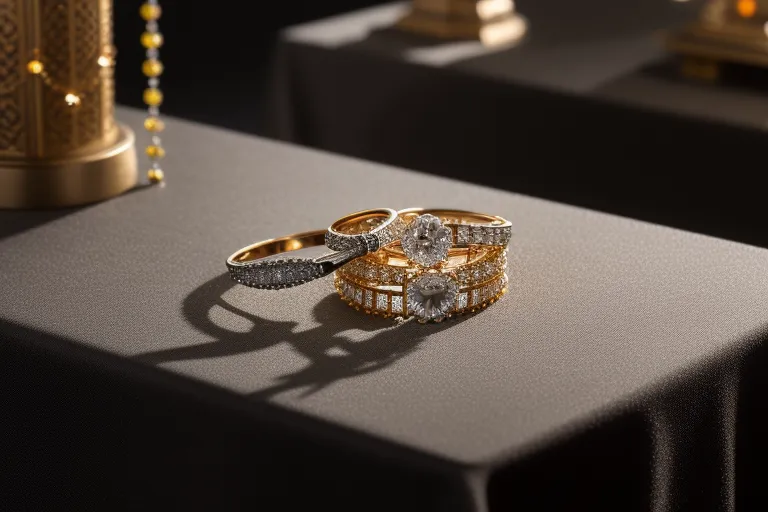
In jewellery terms, the word ‘plumb’ is derived from an age-old measurement technique involving a plumb bob that guarantees absolute levels of accuracy.
So, when it comes to gold jewelry, the term ‘plumb’ indicates an assurance of exactness in the stated gold content. Consequently, gold jewellery marked as ‘plumb’ affirms that the gold content is unmistakable.
This sets ‘plumb’ gold apart from regular gold jewelry. To illustrate, an item marked as 14kp assures you that the gold purity is precisely 58.3%, not a rough estimate.
This differentiates it from a piece labeled as 14k, where the gold purity could be at least 58.3%, but may contain a slight surplus. Therefore, when you come across the ‘plumb’ designation in gold jewelry, it is a declaration of absolute accuracy in gold content.
Difference Between 14k and 14kp
While both 14k and 14kp are indicators of gold content in a piece of jewelry, they differ in accuracy. The presence of 14k on a piece implies that the gold content is not less than 58.3% but could be slightly more.
There’s a margin for slight overage in gold content, and the exact percentage may not be definitively known. This is why such pieces are typically a bit less expensive.
However, when it comes to a piece marked 14kp, the ‘p’ denotes the term’ plumb,’ which indicates absolute accuracy. Thus, a 14kp marking signifies that the gold content is strictly 58.3%, no more, no less. This precision in gold content contributes to a higher value and might make a 14kp piece slightly more expensive than its 14k counterpart.
This difference might seem minor, but it can be crucial for individuals who value precision and accuracy. When investing in gold jewelry, knowing the exact gold content is important and the 14kp marking offers that assurance.
A 14kp marking is a testament to precision in the gold content, while a 14k marking offers a general guideline.
Significance of the 14kp Marking
The 14kp marking carries immense significance in gold jewelry as a hallmark of precision. This marking is not just a mere stamp, but a guarantee of exact gold content in the piece of jewelry, making it highly desirable for those seeking accuracy.
Being well-informed about the gold content you pay for is crucial in gold investments. It gives buyers a sense of security by eliminating ambiguity regarding gold’s purity. Hence, it’s no wonder that the 14kp marking adds to the value of a jewelry piece, making it more attractive to potential buyers.
This precision can foster a stronger bond between the seller and buyer in an industry where trust is paramount. It can instil confidence in the buyer, assuring them of the authenticity and exactness of their investment.
This also holds great importance for jewelry designers and manufacturers, as a 14kp mark can signify their commitment to precision and quality.
Moreover, the 14kp marking can also play a significant role in appraisals and valuations of gold jewelry pieces. Since this marking represents the true gold content of the piece, it can help in accurate evaluations.
Consequently, it’s highly sought after in the resale market as well. It promises absolute accuracy in gold content, offering a distinct edge over pieces marked as simply 14k.
The 14kp mark is not just a symbol but a statement of precision and quality in the gold jewelry industry. It offers an assurance of exact gold content, reinforcing trust and enhancing the value of the jewelry piece.
Spotting Fake Gold Jewelry
When assessing the authenticity of gold jewelry, the first element to consider is the presence of a karat stamp. Genuine gold pieces generally bear a karat stamp, such as 10k, 14k, or 18k. The absence of a stamp might indicate a counterfeit.
However, it’s important to remember that some older pieces or those from certain regions might not have a stamp, so further verification methods may be required.
Another method to authenticate gold is by performing a magnet test. Gold is a non-magnetic metal, hence if your piece of jewelry is attracted to a magnet, it is not composed of real gold.
Nevertheless, while this test can be useful, it is not foolproof. Several non-gold metals are non-magnetic and could pass this test, so it’s always a good idea to consider additional verification steps.
Apart from these, look for signs of discoloration or wear in areas where the jewelry experiences the most friction – this could indicate gold plating rather than solid gold. Also, check for any suspicious or unfamiliar markings. Gold jewelry marked with GP (gold plated), GF (gold filled), or RGP (rolled gold plated) indicate that the piece is not pure gold.
Remember, if there’s any doubt about a piece’s authenticity, consider seeking a professional opinion. Jewelers and certified gemologists have specific equipment to accurately identify the metal content of jewelry. They can advise on potential values and other important factors when buying or selling gold pieces. Remember, knowledge is power, and knowing how to spot fake gold can ensure you get the value you expect from your investment.
14kp Gold Jewelry Care
Proper maintenance is key to preserving the allure and shine of your 14kp gold jewelry. It is advisable to avoid wearing these precious pieces during activities that could lead to scratches or damage, such as sports, gardening, or house chores. This preventative measure will help safeguard your jewelry from potential harm and extend its lifespan.
Cleaning 14kp gold jewelry does not require any specialized products or complicated procedures. It can be easily accomplished with items you already have at home. Begin by filling a bowl with warm water and adding a few drops of mild dish soap. Ensure that the soap is thoroughly mixed with the water.
Next, immerse your jewelry in the soapy solution, allowing it to soak for 15-20 minutes. This will loosen any dirt or oils that have accumulated on the surface of the gold. Following the soak, gently clean the jewellery using a soft cloth or a gentle brush, like a soft-bristled toothbrush. Be careful to scrub softly to avoid causing any scratches.
Once the jewellery is clean, rinse it thoroughly under warm running water. Make sure all soap residue is completely washed off. Finally, dry your jewelry completely using a soft, lint-free cloth. Avoid using paper towels or tissue paper, as these could potentially scratch the gold.
For those pieces with intricate designs or embedded gems, you may want to consider seeking professional cleaning to ensure no damage is done during the process. Lastly, store your 14kp gold pieces separately in a jewelry box to avoid scratching each other.
With proper care, your 14kp gold jewelry will maintain its exquisite appeal and serve as a lasting treasure in your collection.
Factors Affecting the Value of 14kp Gold Jewelry
The gold content doesn’t determine the 14kp gold jewellery. Several variables come into play when appraising these pieces. The prevailing market price of gold certainly plays a crucial role. This is because the value of gold fluctuates based on market conditions, which directly influences the worth of gold jewelry.
Another key element is the weight of the gold in the piece. Since gold is sold by weight, heavier pieces typically command higher prices. The craftsmanship and design of the jewelry also contribute to its value. An intricate, well-crafted piece can be worth more than a simple, mass-produced item.
The brand behind the jewelry can also impact its value. Renowned brands often demand a premium for their pieces due to their reputation for quality and design. Lastly, the age of the piece can be a factor. Vintage and antique gold pieces might fetch higher prices due to their rarity and historical significance.
It’s vital toIt’secIt’salthat the ’14kp”mark’n’14kp”mark’ngrecision in gold content, which can add to the overall value of the piece. Yet, otit’sftit’ss help shape the final price tag of 14kp gold jewellery. Armed with this knowledge, you can accurately gauge the worth of a piece before investing in it.
Last update on 2026-01-16 / Affiliate links / Images from Amazon Product Advertising API. We're a participant in the Amazon Associates Program, which means we earn a commission from qualifying purchases made through our affiliate links at no extra cost to you. Thank you for your support!











